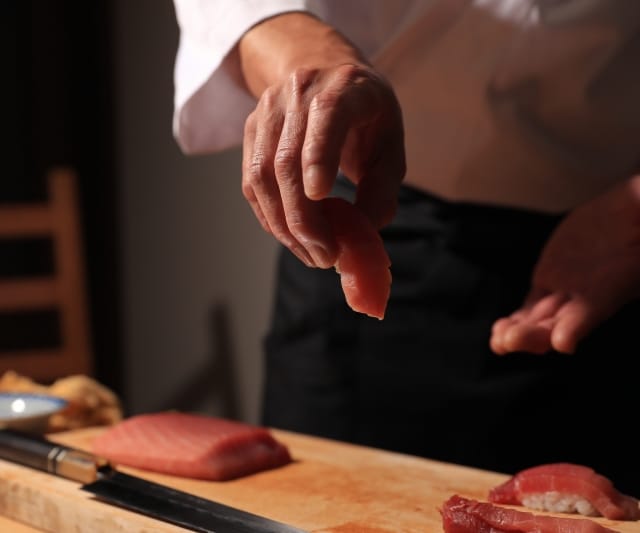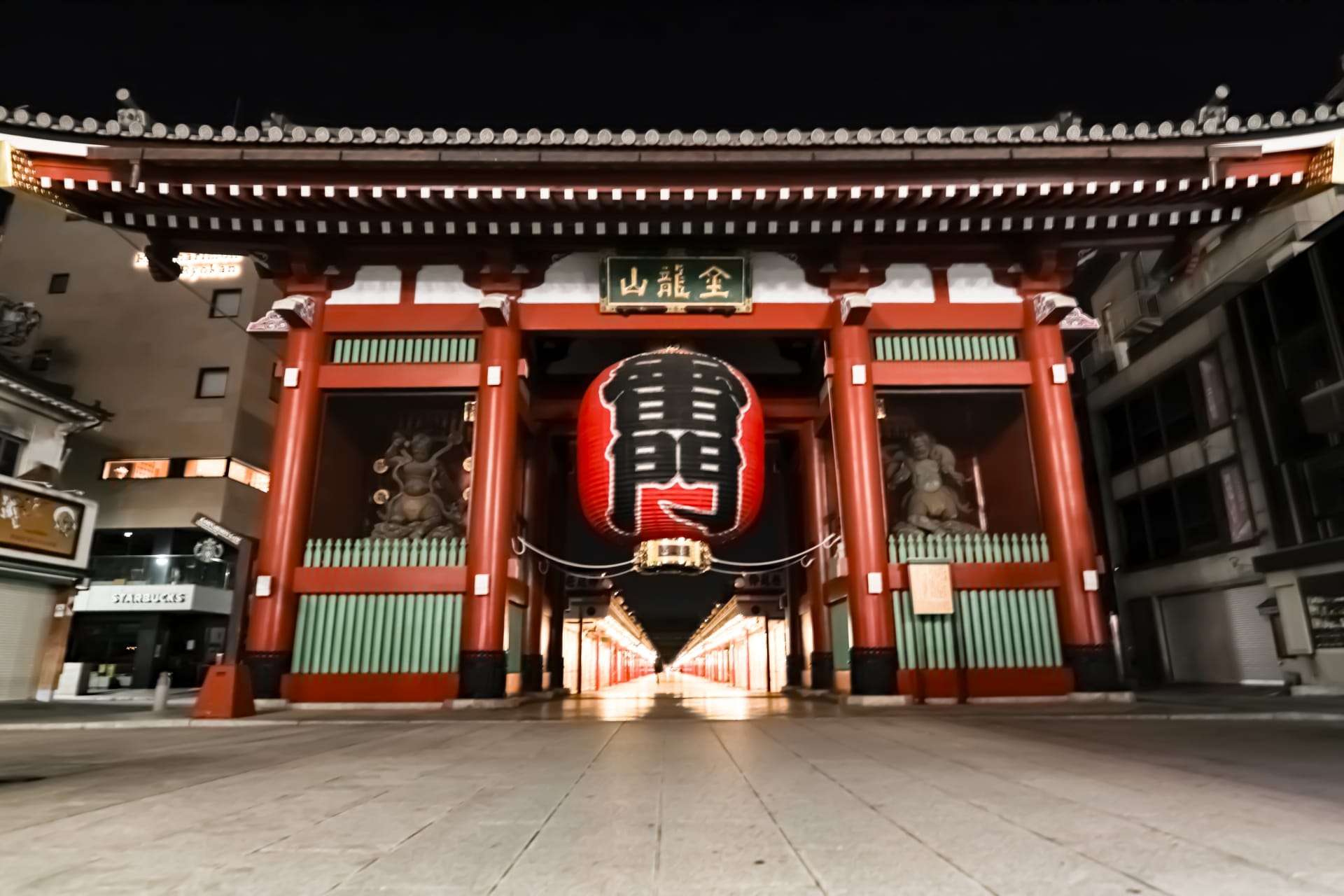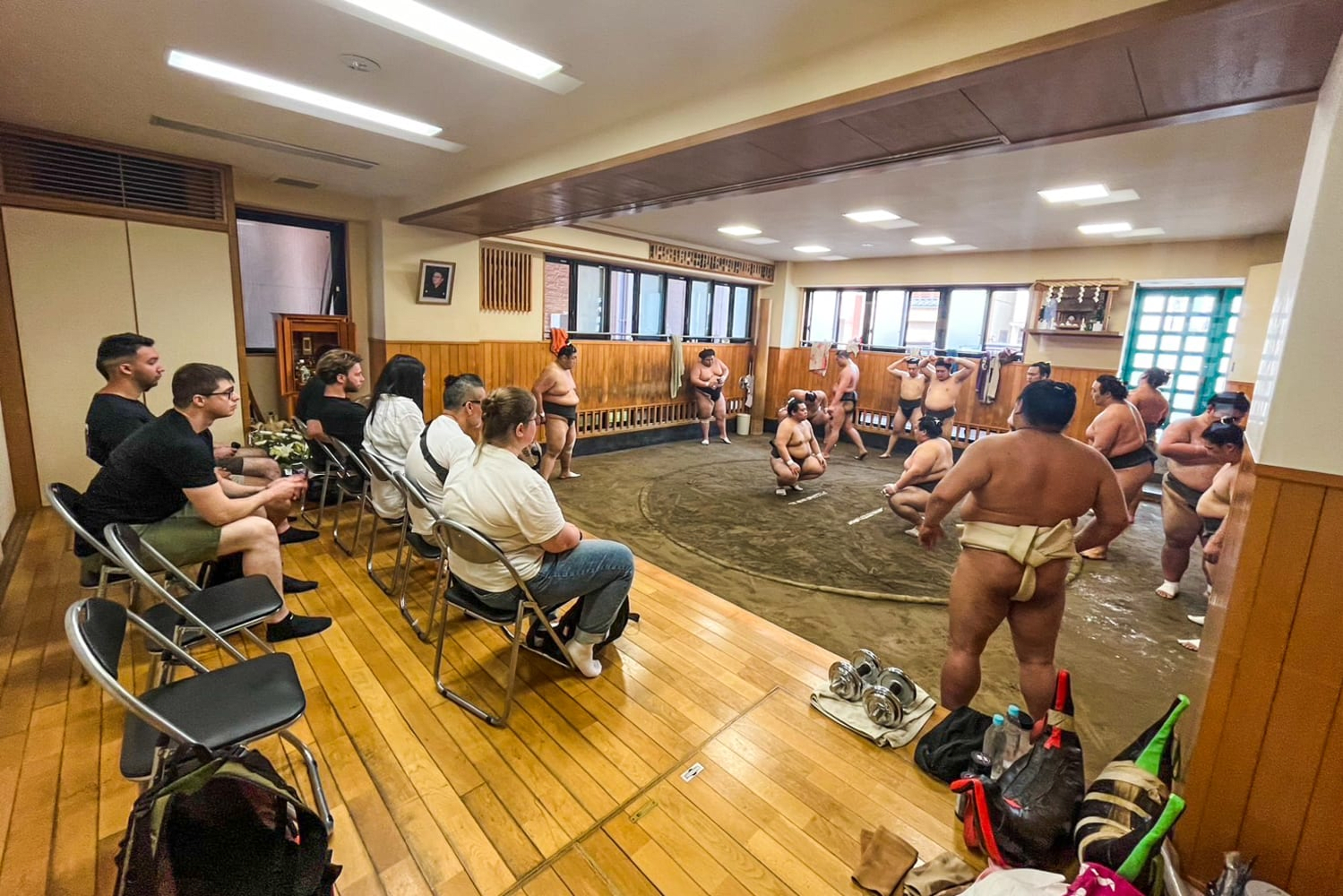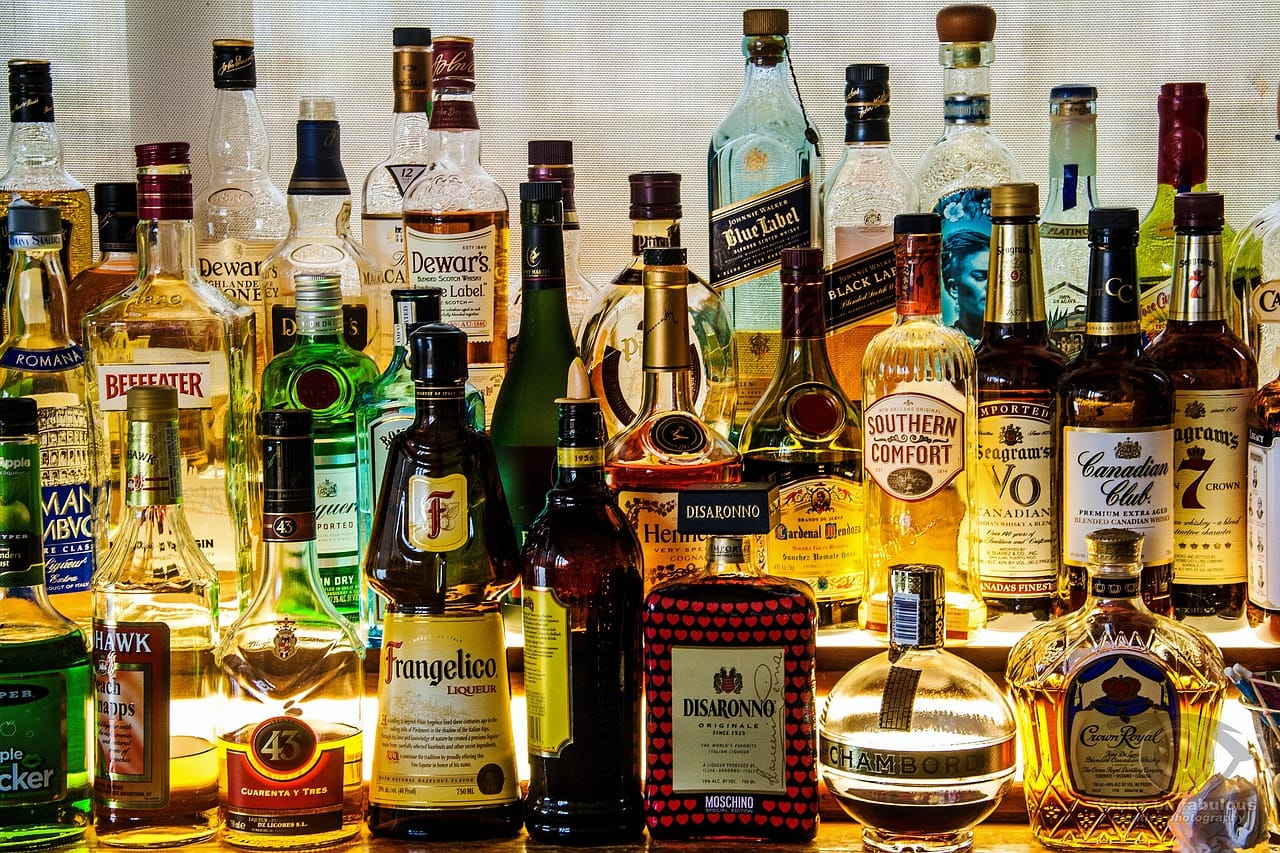How to Enjoy High-End Sushi Restaurants in Japan: Complete Guide to Proper Etiquette
The reason for updating the article is the growing interest in tours that allow visitors to enjoy Japanese food culture and delicious dishes. As these tours gain popularity, Magical Trip's tour, which ranked #1 among all tours on Tripadvisor, has been receiving numerous applications.

For those interested in traditional Japanese cuisine especially Sushi, join the "Finest Quality Sushi & Tempura Dining Experience in Ginza," where a knowledgeable local guide will take you to their highly recommended Japanese restaurants. While enjoying sushi, tempura, and sake, your local guide will teach you proper dining etiquette and the best ways to savor each dish.
If you're interested in exploring the Tsukiji Market area, one of Japan's largest seafood markets located in Tokyo, consider joining the "Tsukiji Fish Market Walking Food Tour in Tokyo." You can enjoy food-hopping at the Tsukiji Outer Market and have a guide show you around the tourist attractions like Tsukiji Hongwanji in the Tsukiji area.
We hope you'll have a wonderful time experiencing everything Sushi has to offer by joining a Magical Trip tour!
Introduction
As a Japanese person who has loved sushi since childhood, I have visited numerous sushi restaurants throughout my life.
From small sushi shops to conveyor belt sushi restaurants and Michelin-starred establishments, I've noticed a significant increase in international visitors in recent years and the various challenges they face.
Indeed, dining at high-end sushi restaurants isn't easy for foreign visitors. Beyond the language barrier, there's the process of making reservations, proper behavior at the counter, and numerous unwritten cultural customs. Anyone would feel nervous when facing prices that can exceed tens of thousands of yen.
However, these hurdles are not insurmountable. Rather, each of these "rules" has a reason behind it, all designed to ensure the best possible sushi experience.
As a Japanese person and a sushi enthusiast, I want to share everything I've experienced and learned in the most straightforward way possible.
While sushi is now loved worldwide, experiencing it at a high-end restaurant in Japan is truly special. Through this article, I hope foreign visitors will feel more connected to Japanese sushi culture and thoroughly enjoy their experience!
Table of Contents
・Basic Etiquette for Reservations and Arrival
・The Correct Way to Eat Sushi
・How to Behave at the Counter
・Payment and Tipping
・Frequently Asked Questions
Basic Etiquette for Reservations and Arrival
To fully enjoy dining at high-end sushi restaurants in Japan, it's important to understand proper reservation and arrival etiquette. From my experience, following these basic rules will lead to a more fulfilling sushi experience.
How to Make Reservations
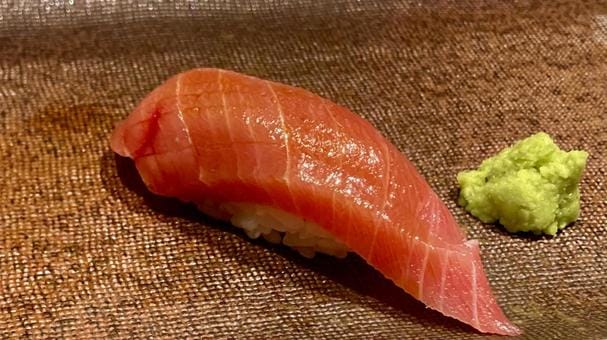
The first step to enjoying a high-end sushi restaurant begins with making a reservation.
Based on my experience, I recommend making reservations 1-2 months in advance. For famous restaurants, you might need to book even earlier.
Since reservations are preferably made in Japanese, I recommend asking your hotel's concierge service or a Japan-based friend for help. If you have any dietary restrictions or allergies, it's crucial to mention these when making the reservation.
If you need to change or cancel your reservation, notify the restaurant as early as possible. The same applies to changes in party size. This greatly affects the restaurant's preparation.
Points to Note When Arriving
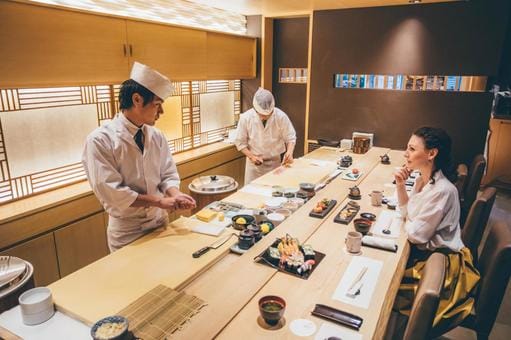
It's important to pay attention to your appearance and what you bring. I particularly make sure to avoid flashy clothes and opt for modest attire.
Keep strong perfumes and heavily scented cosmetics to a minimum. This is because they can interfere with the delicate flavors of the sushi.
I recommend leaving large bags at your hotel or in a coin locker, as they can disturb the atmosphere and inconvenience other customers.
Regarding photography, always obtain permission from the restaurant first. Many high-end establishments prohibit photography, so be careful.
The Correct Way to Eat Sushi
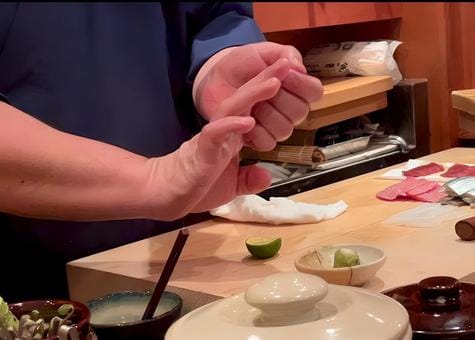
Understanding basic sushi etiquette is crucial for enjoying sushi at its best. From my experience, these customs aren't meant to be rigid rules but rather ways to fully appreciate sushi's true flavors.
Basic Etiquette
The most important rule when eating sushi is how to apply soy sauce. Always dip only the fish (neta) side in soy sauce. Dipping the rice (shari) side will cause it to fall apart.
I recommend eating each piece in one bite. This allows you to experience the perfect harmony between the fish and rice.
Regarding wasabi preferences or additions, it's best to tell the chef at the beginning. While I used to be shy about making such requests, I can now do so comfortably.
It's also important not to crush the rice. Maintaining the shape that the chef carefully formed allows you to enjoy the intended taste.
Whether to use chopsticks or eat with your hands is a matter of personal preference. I usually eat with my hands.
Etiquette for Omakase Courses
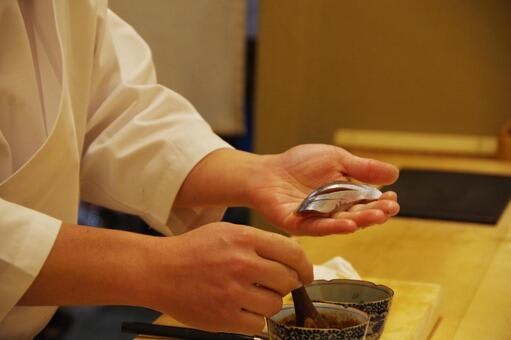
Omakase courses follow a carefully planned serving order. Generally, they start with white-fleshed fish and gradually progress to fattier fish. This is designed to let you enjoy the progression of flavors.
Ginger (gari) is used to cleanse your palate between different types of sushi. I particularly notice how eating gari after fatty fish makes the next piece taste even better.
The chef's explanations are crucial for understanding each sushi's characteristics and how best to eat it. I always listen intently to the chef's explanations.
If there are any foods you cannot eat, be sure to mention this in advance. This way, appropriate substitutions can often be arranged.
Let the chef set the pace. This is because they time each piece to be served at its optimal state.
How to Behave at the Counter
The counter seat at a high-end sushi restaurant is the best place to enjoy sushi. Knowing how to behave properly here will enhance your experience.
Communication with the Chef
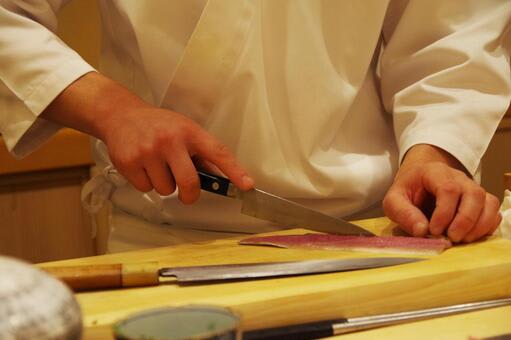
Conversation with the chef is an important part of the sushi experience. From my experience, I recommend keeping communication simple and appropriate.
Choose times when the chef's hands are free to speak with them. In particular, avoid talking to them while they're using their knife, as this requires concentration.
If you have questions, wait until the chef is free. While I used to be too nervous to ask questions, I can now enjoy natural conversations.
Avoid interrupting conversations between other customers and the chef. At the counter, it's important to respect each customer's interaction with the chef.
Counter Seat Behavior
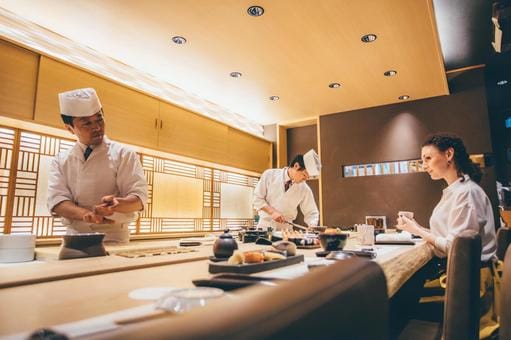
Proper behavior at the counter is fundamental for everyone's comfort. It's important not to rest your elbows on the counter.
Keep mobile phone use to a minimum. While I understand the desire to take photos, consideration for other customers is necessary.
Maintaining appropriate distance from other customers is also important. I always keep conversations with neighboring seats minimal and respect everyone's space.
Avoid loud conversations and maintain a calm atmosphere. Also, keep walking around to a minimum.
Payment and Tipping

Next, I'll explain about payment methods and tipping.
Payment Methods
Cash payment is most preferred. In my experience, many high-end sushi restaurants prefer cash transactions.
If you plan to use a credit card, always confirm in advance if it's accepted. I always recommend having cash on hand just in case.
Tipping and Gratuity
Tipping is not necessary at Japanese sushi restaurants. This is an established part of Japanese culture.
Gratuity is also not common. Instead, expressing sincere gratitude through words is the most appropriate way.
I always make sure to give a polite greeting and words of thanks. Also, if possible, expressing intention to return helps build a good relationship with the chef.
Frequently Asked Questions
Finally, I'll answer common questions about visiting high-end sushi restaurants.
Can I Enter Without a Reservation?
At high-end sushi restaurants, reservations are generally required. From my experience, trying to get in on a waitlist the same day is very difficult and not recommended.
I recommend making reservations in Japanese whenever possible. For overseas reservations, consider using reservation websites.
Particularly at popular restaurants with Michelin stars, reservations might be needed several months in advance. I always make sure to book well ahead for popular establishments.
Is Photography Allowed?
Photography rules vary by restaurant. In my experience, some completely prohibit it while others allow it with conditions.
Always get permission first. Even when permitted, flash photography is typically prohibited.
Rules about social media posts also vary by restaurant, so confirmation is necessary. Also, take extreme care not to include other customers in your photos.
Can I Order Additional Items During an Omakase Course?
Additional orders are generally possible. However, I recommend making additional orders at the end rather than during the course.
Always confirm additional item prices in advance. At high-end establishments, the price per piece can be relatively expensive.
It's important to respect the chef's suggestions. Their recommendations, based on the day's ingredients and what's been served, always have a reason.
It's also important to be mindful of not disrupting the course flow. When I make additional orders, I always time them carefully.
Are English Menus Available?
Many high-end sushi restaurants don't provide English menus. In my experience, not having English menus is actually more common.
I recommend checking about English menu availability when making reservations. Recently, more restaurants are providing menus with photos.
Regarding translation apps, I recommend checking with the restaurant in advance.
Is There a Dress Code?
Smart casual is the basic dress code. When I visit high-end sushi restaurants, I always make sure to wear clean, modest clothing.
Avoid overly casual attire like sandals or beachwear. From my experience, more formal attire is preferable for evening visits.
As mentioned earlier, keep strongly scented cosmetics to a minimum. This is to avoid interfering with the delicate aromas and flavors of the sushi.
Hat-wearing should also be avoided. It's preferable to remove hats inside the restaurant.
Maintaining a clean, neat appearance shows respect for the establishment and leads to a better sushi experience. I stick to simple, elegant attire as a basic rule.
As a Japanese person and sushi enthusiast, I hope people from around the world will properly understand and truly enjoy this wonderful food culture.
The manners and etiquette I've introduced here aren't meant to restrict foreign visitors. Rather, I hope you'll see them as guideposts for achieving the best possible sushi experience.
Even now, I continue to discover new things and learn more about the world of sushi. I hope you'll use this guide to fully experience the depth and wonder of Japanese sushi culture!
And nothing would make me happier than if, rather than making this a one-time tourist experience, you return to Japan to accumulate new sushi experiences.
High-end sushi truly represents Japan's "experiential food culture" that we can proudly present to the world.
